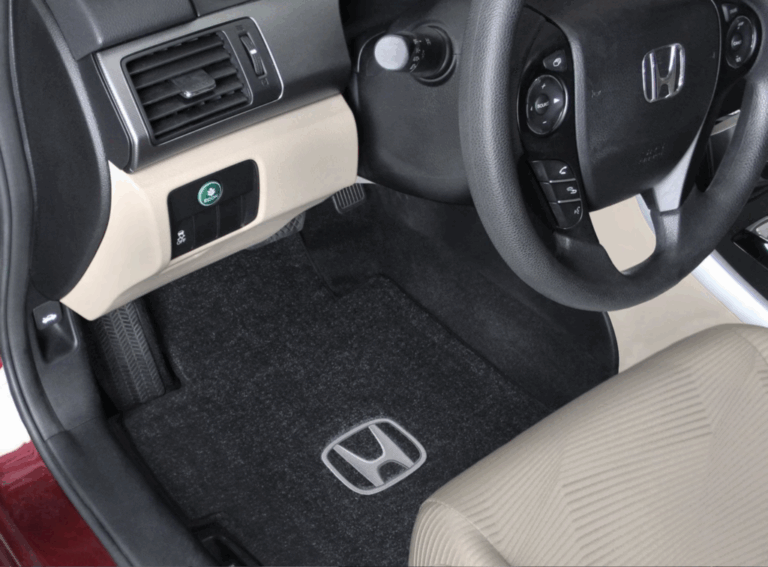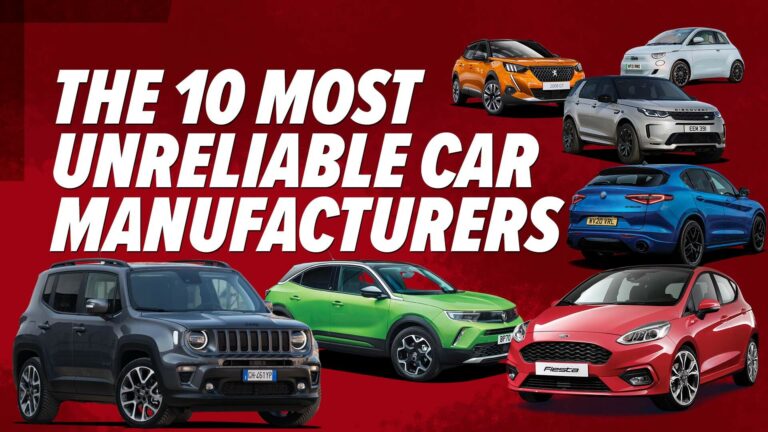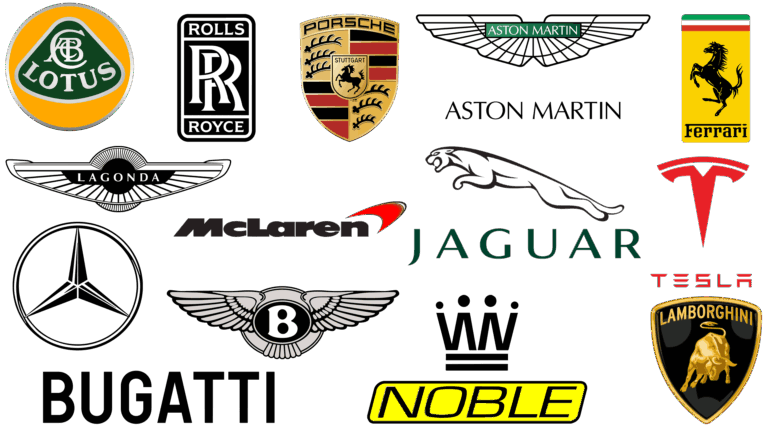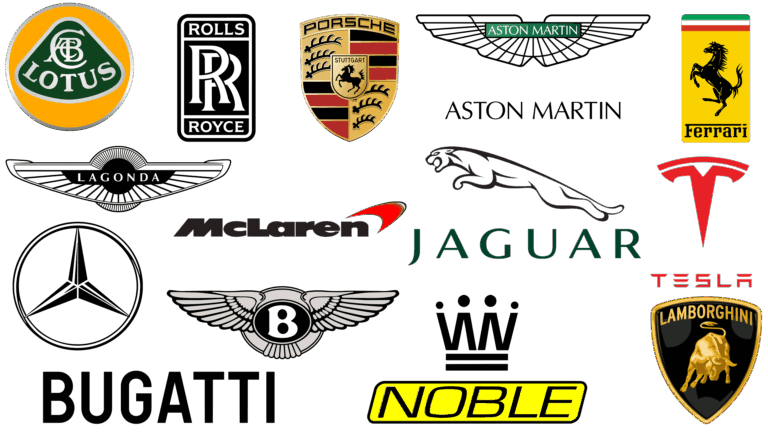Near Luxury Car Brands: The Sweet Spot of Automotive Excellence
Near Luxury Car Brands: The Sweet Spot of Automotive Excellence cars.truckstrend.com
In the vast landscape of automotive choices, there exists a compelling segment that offers a tantalizing blend of premium features, sophisticated design, and refined performance without demanding the stratospheric price tags of traditional luxury behemoths. This is the realm of Near Luxury Car Brands – a coveted sweet spot for discerning buyers who seek more than just basic transportation but aren’t quite ready to commit to the ultimate in high-end extravagance.
Near luxury brands represent a crucial bridge between mainstream automotive manufacturers and their full-fledged luxury counterparts. They aim to provide a significant upgrade in material quality, technological sophistication, driving dynamics, and brand prestige compared to mass-market vehicles, while remaining considerably more accessible than top-tier luxury marques like Mercedes-Benz S-Class, BMW 7-Series, or Audi A8. For many, a near luxury vehicle represents the perfect balance of aspiration and practicality, delivering a taste of the good life without breaking the bank.
Near Luxury Car Brands: The Sweet Spot of Automotive Excellence
What Defines a Near Luxury Car Brand?
Understanding what constitutes a near luxury brand is key to appreciating its unique value proposition. These brands and their vehicles typically exhibit a distinct set of characteristics that elevate them above the everyday:
- Elevated Interior Quality: Expect higher-grade materials such as genuine leather, soft-touch plastics, real wood or metal accents, and meticulous fit and finish. The cabin environment feels more cohesive, quiet, and inviting.
- Advanced Technology & Features: Near luxury cars often debut cutting-edge infotainment systems, advanced driver-assistance systems (ADAS), premium audio setups, and convenience features (e.g., ventilated seats, heads-up displays) that are optional or unavailable on mainstream models.
- Refined Driving Dynamics: While not always focused on outright performance, these vehicles offer a more sophisticated and comfortable ride quality, superior noise insulation, and more precise handling. Powertrains are typically more powerful and smoother than their mainstream equivalents.
- Distinctive Design Language: Near luxury brands invest heavily in unique design aesthetics that set their vehicles apart. This often translates into more elegant lines, bolder grilles, and a more commanding road presence.
- Enhanced Brand Perception: Owning a vehicle from a near luxury brand inherently carries a degree of prestige that surpasses a mass-market badge. It signals a step up in lifestyle and discernment.
- Strategic Pricing: Positioned above fully loaded mainstream models but below the core offerings of top-tier luxury brands. This pricing strategy allows them to offer significant value for the features and experience provided.

It’s important to note that the lines can sometimes blur. Some mainstream brands offer incredibly well-appointed top trims that venture into near luxury territory (e.g., a fully loaded Mazda CX-90 or Honda Pilot Elite), while entry-level models from traditional luxury brands (e.g., a base Mercedes-Benz A-Class or BMW 2-Series Gran Coupe) can sometimes be perceived as competing in this segment. However, true near luxury brands are those whose entire lineup is designed and marketed with these elevated standards in mind.
Why Choose a Near Luxury Car? The Compelling Benefits
The decision to opt for a near luxury vehicle is often driven by a desire for a superior ownership experience without the financial commitment of a full luxury car. Here are the key benefits:
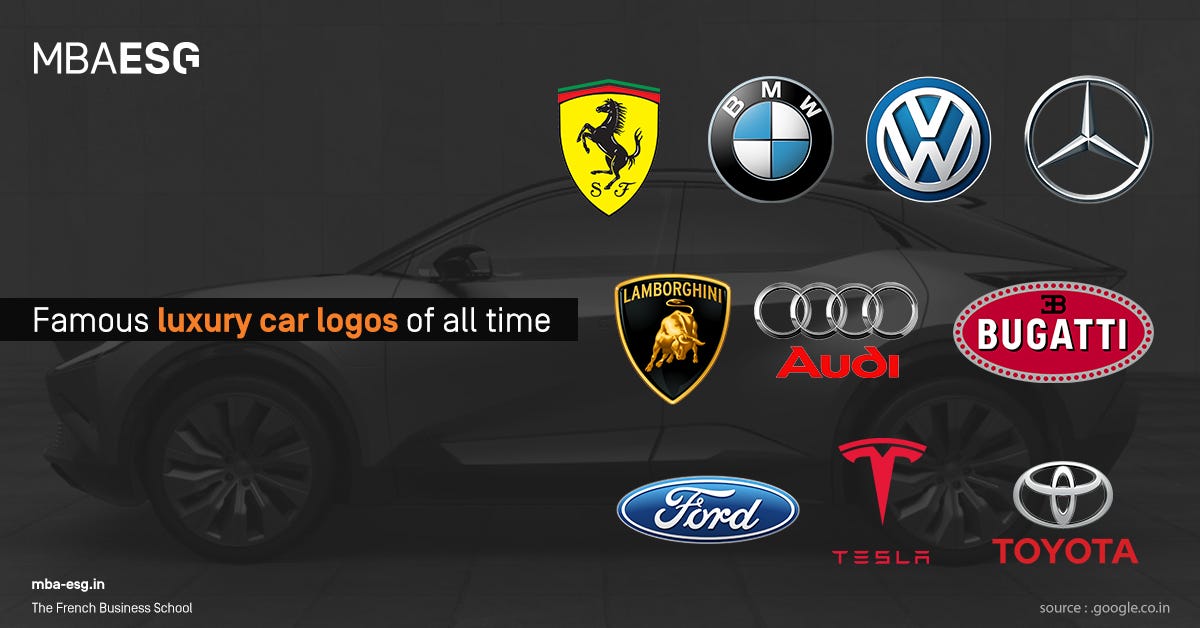
- Exceptional Value for Money: This is perhaps the most significant advantage. You get a substantial upgrade in quality, features, and performance for a price that is considerably less than a comparable vehicle from a premium German or high-end Japanese luxury brand.
- Enhanced Comfort and Refinement: From quieter cabins to smoother suspension tuning and more supportive seats, near luxury cars are designed for a more comfortable and less fatiguing driving experience, especially on long journeys.
- Access to Cutting-Edge Technology: These brands are often early adopters of new automotive technologies, making advanced safety features, connectivity options, and infotainment systems more accessible.
- Superior Build Quality and Materials: The attention to detail in construction and the use of higher-grade materials contribute to a more durable and satisfying ownership experience.
- Elevated Driving Experience: While not always performance monsters, near luxury vehicles typically offer more responsive engines, better handling dynamics, and a more engaging feel behind the wheel than their mainstream counterparts.
- Subtle Prestige: While not as overtly status-driven as a top-tier luxury car, a near luxury vehicle still conveys a sense of accomplishment and discerning taste.

Key Players in the Near Luxury Segment
Several brands have carved out a significant niche in the near luxury market, each with its unique philosophy and strengths:
- Acura (Honda’s Luxury Arm): Known for its strong reliability, advanced technology (especially its Super Handling All-Wheel Drive – SH-AWD), and a sportier driving demeanor. Models like the Integra, TLX, RDX, and MDX offer a compelling blend of performance and practicality.
- Infiniti (Nissan’s Luxury Arm): Often characterized by distinctive styling, powerful V6 engines, and a focus on driver engagement. The Q50 sedan and QX60 SUV are popular choices that blend performance with refined comfort.
- Lincoln (Ford’s Luxury Arm): Re-emerging with a focus on "Quiet Flight" – a serene, comfortable, and distinctly American luxury experience. Lincoln vehicles emphasize spacious interiors, plush comfort, and intuitive technology, seen in models like the Corsair, Nautilus, and Aviator.
- Genesis (Hyundai’s Luxury Arm): A relatively new but incredibly impactful player. Genesis has rapidly gained recognition for its striking design language, exceptional interior quality, strong performance, and a compelling value proposition backed by an excellent warranty. The G70 sedan and GV70 SUV are particularly strong contenders.
- Volvo: While increasingly moving into the full luxury space, Volvo’s entry and mid-tier models (like the S60, XC40, and XC60) often compete directly in the near luxury segment. They stand out for their unparalleled safety innovations, minimalist Scandinavian design, and a focus on comfort and environmental responsibility.
Important Considerations When Buying a Near Luxury Car
Purchasing a near luxury vehicle involves more than just admiring its sleek lines. Careful consideration of several factors will ensure you make an informed decision:
- Budget Beyond the Sticker Price: Factor in not just the purchase price, but also insurance premiums (often higher), fuel costs (some require premium gas), and potential maintenance costs (parts and specialized labor can be more expensive).
- Features vs. Needs: Near luxury cars come packed with features. Prioritize what truly matters to you. Do you need the largest infotainment screen, or will a simpler one suffice? Are advanced driver-assistance systems a must-have, or are you comfortable with basic safety features?
- Depreciation: While often better than ultra-luxury cars, near luxury vehicles can still depreciate faster than mainstream counterparts, especially if new. Research specific model depreciation trends.
- Reliability and Maintenance Costs: Investigate the reliability ratings for the specific brand and model you’re considering. Some brands have better reputations for long-term dependability and lower repair costs than others. Check typical service intervals and costs.
- Test Drive Thoroughly: Don’t just take a quick spin around the block. Drive the car on various road types – city streets, highways, and even some winding roads – to assess ride comfort, handling, noise levels, and powertrain responsiveness.
- Resale Value: While a car is an expense, considering its potential resale value can impact your overall cost of ownership. Some near luxury models hold their value better than others.
Tips for Maximizing Value
To get the most out of your near luxury car purchase:
- Research Specific Trims and Options: Often, the mid-range trims offer the best balance of features and value. Avoid paying for expensive packages you don’t truly need.
- Consider Certified Pre-Owned (CPO): A CPO vehicle from a near luxury brand can offer significant savings over new, often with an extended warranty and rigorous inspection, providing peace of mind.
- Negotiate Aggressively: Dealers often have more room to negotiate on near luxury vehicles than on high-demand mainstream models. Don’t be afraid to walk away if the deal isn’t right.
- Shop Around for Financing: Don’t just accept the dealer’s financing offer. Compare rates from banks, credit unions, and online lenders.
- Adhere to Maintenance Schedules: Regular, proper maintenance is crucial for reliability and preserving resale value. Don’t skimp on recommended service.
- Evaluate Extended Warranties: While the manufacturer’s warranty is usually comprehensive, consider if an extended warranty makes financial sense based on reliability data and your planned ownership period.
Potential Challenges and Solutions
While appealing, the near luxury segment isn’t without its potential challenges:
- Perception Gap: Some buyers might feel that a near luxury car doesn’t carry the same "status" as a true luxury brand.
- Solution: Focus on the tangible benefits and personal satisfaction the vehicle provides. If you value features, comfort, and driving dynamics over badge snobbery, this isn’t an issue.
- Higher Running Costs Than Mainstream: Fuel, insurance, and parts can be more expensive than for a comparable mainstream vehicle.
- Solution: Budget realistically for these costs upfront. Research average ownership costs for specific models. Consider a maintenance plan offered by the dealer.
- Significant Depreciation (for new models): While better than ultra-luxury, new near luxury cars can still lose value quickly in the first few years.
- Solution: Consider buying a lightly used or Certified Pre-Owned (CPO) vehicle, which has already absorbed the steepest part of the depreciation curve. Choose models with a reputation for better resale value.
- Brand Blurring: With mainstream brands offering very premium trims and luxury brands offering entry-level models, the distinction can sometimes be confusing.
- Solution: Don’t get caught up in brand names alone. Focus on the actual features, build quality, driving experience, and overall value that a specific vehicle offers, regardless of its "segment" label.
Near Luxury Car Brands: Representative Starting MSRPs (2024 Models)
Please note: Prices are estimated starting MSRPs for base models and can vary significantly based on trim level, options, packages, destination charges, and location. They are subject to change by the manufacturer.
| Brand | Representative Entry-Level Model | Body Style | Estimated Starting MSRP (USD) | Key Differentiating Factor |
|---|---|---|---|---|
| Acura | Integra | Compact Sedan | $31,500 – $37,000 | Sporty performance, reliability, advanced tech |
| RDX | Compact SUV | $44,000 – $52,000 | SH-AWD, balanced performance, premium features | |
| Infiniti | Q50 | Mid-size Sedan | $43,000 – $56,000 | Distinctive styling, powerful engines |
| QX50 | Compact SUV | $42,000 – $55,000 | Unique engine tech, comfortable ride | |
| Lincoln | Corsair | Compact SUV | $40,000 – $55,000 | "Quiet Flight" luxury, serene cabin, American comfort |
| Nautilus | Mid-size SUV | $52,000 – $75,000 | Spacious interior, advanced tech, relaxed driving | |
| Genesis | G70 | Compact Sedan | $42,000 – $52,000 | Bold design, strong performance, excellent value |
| GV70 | Compact SUV | $46,000 – $60,000 | Stunning interior, engaging drive, long warranty | |
| Volvo | XC40 | Compact SUV | $41,000 – $48,000 | Safety focus, Scandinavian design, minimalist luxury |
| S60 | Compact Sedan | $43,000 – $50,000 | Elegant design, comfortable ride, advanced safety |
Prices are approximate and subject to change. Always check official manufacturer websites and local dealerships for the most current pricing.
Frequently Asked Questions (FAQ) about Near Luxury Car Brands
Q1: What’s the main difference between a "near luxury" car and a "luxury" car?
A1: Near luxury cars offer many luxury features, premium materials, and refined driving dynamics at a significantly lower price point. They bridge the gap between mainstream and high-end luxury. True luxury cars often have more exclusive materials, bespoke customization options, higher performance ceilings, and a stronger emphasis on brand prestige, with correspondingly much higher prices.
Q2: Are near luxury cars reliable?
A2: Reliability varies by brand and specific model, just like any other car segment. Brands like Acura and Genesis generally have strong reliability reputations. It’s crucial to research specific models through consumer reports and reliability surveys before purchasing.
Q3: Do near luxury cars hold their value well?
A3: Generally, near luxury cars depreciate more than mainstream vehicles but less dramatically than ultra-luxury models. Their depreciation curve can be steeper in the initial years. Buying a Certified Pre-Owned (CPO) vehicle can help mitigate the impact of initial depreciation.
Q4: Are maintenance costs higher for near luxury cars?
A4: Yes, typically. Parts for near luxury vehicles can be more expensive, and specialized labor may be required, leading to higher maintenance and repair costs compared to mainstream vehicles. Factor these into your budget.
Q5: Which near luxury brand is best?
A5: There’s no single "best" brand; it depends on your priorities. Acura offers reliability and sportiness, Infiniti a unique style and performance, Lincoln focuses on serene comfort, Genesis excels in design, value, and modern tech, and Volvo prioritizes safety and Scandinavian elegance. Test driving different models is key to finding the best fit for you.
Q6: Can I get a good deal on a near luxury car?
A6: Yes, often. Dealers may have more flexibility on pricing for near luxury vehicles compared to high-demand mainstream models. Research incentives, compare prices from multiple dealerships, and be prepared to negotiate for the best deal.
Conclusion
Near luxury car brands occupy a fascinating and highly desirable position in the automotive market. They offer a compelling alternative for those who aspire to a premium driving experience, superior comfort, and advanced technology without the prohibitive costs associated with top-tier luxury. By understanding what defines these brands, their inherent benefits, and the important considerations involved in their purchase and ownership, buyers can confidently navigate this segment.
Whether you prioritize cutting-edge technology, serene comfort, engaging performance, or simply a refined and elevated daily commute, the near luxury segment offers a diverse range of vehicles that deliver exceptional value. For the discerning individual, a near luxury car isn’t just a mode of transport; it’s a smart investment in a more enjoyable and sophisticated journey, embodying the sweet spot where aspiration meets accessibility.

